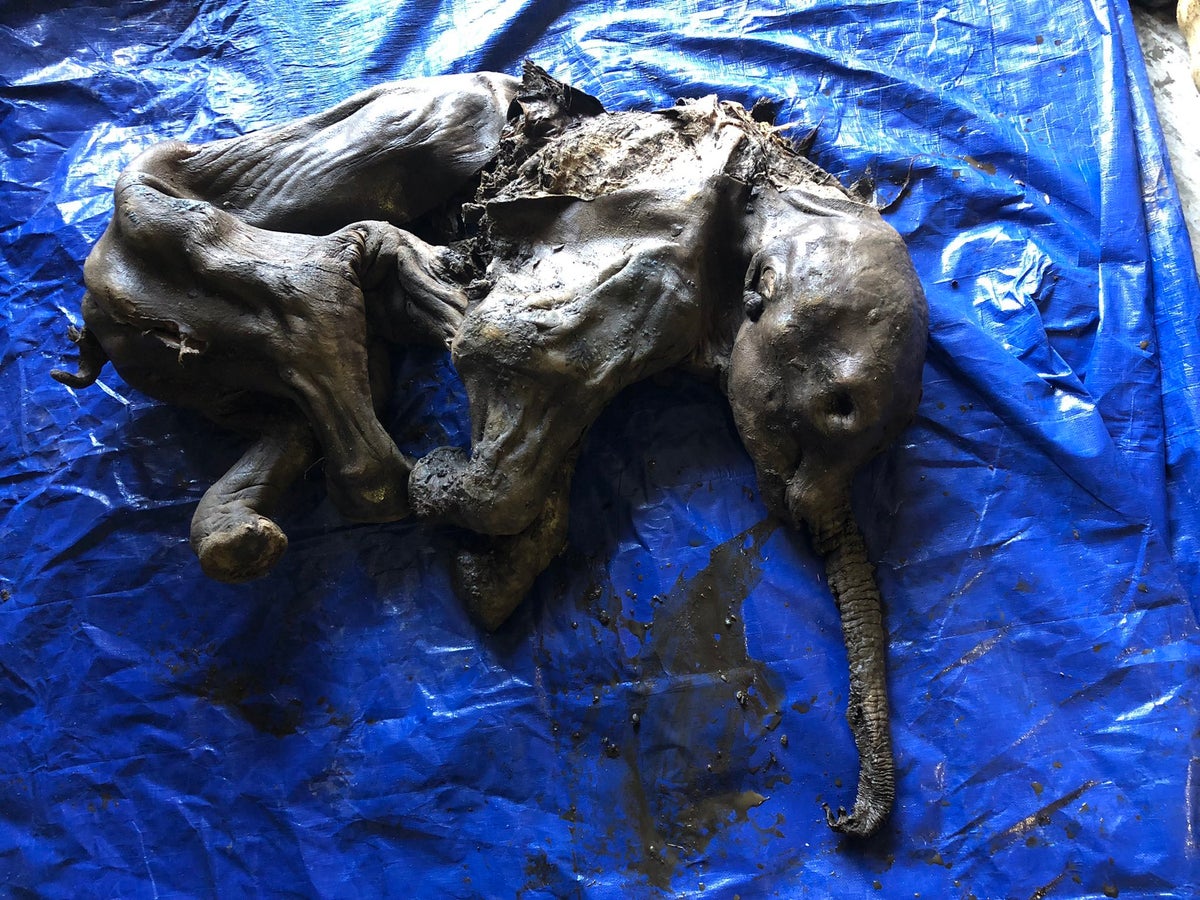
A miner working in Canada’s Klondike gold fields has found near-complete, mummified remains of a baby woolly mammoth that lived more than 30,000 years ago.
Indigenous people living in the region have named the mammoth calf Nun cho ga, meaning “big baby animal” in the Han language.
Analysis suggests the calf is a female, roughly the same size as the 42,000-year-old mummified infant woolly mammoth “Lyuba” that was discovered in Siberia in 2007.
Geologists, including those from the Yukon Geological Survey and the University of Calgary in Canada, who recovered the well-preserved remains say Nun cho ga likely died and was frozen during the Ice Age.
The new discovery is the first near-complete and best-preserved mummified woolly mammoth found in North America, according to researchers.
“As an ice age palaeontologist, it has been one of my lifelong dreams to come face to face with a real woolly mammoth. That dream came true today,” Yukon palaeontologist Grant Zazula said.
“Nun cho ga is beautiful and one of the most incredible mummified Ice Age animals ever discovered in the world. I am excited to get to know her more,” Dr Zazula said.
In the coming months, the Trʼondek Hwechʼin council and the government of Yukon say they would work together to preserve and learn more about Nun cho ga and share these stories and information with the community of Dawson City, residents of Yukon and the global scientific community.
“This is a remarkable recovery for our First Nation, and we look forward to collaborating with the Yukon government on the next steps in the process for moving forward with these remains in a way that honours our traditions, culture, and laws,” Tr’ondek Hwech’in chief Roberta Joseph said.
The remains, researchers say, provide a detailed glimpse into the prehistoric time when Nun cho ga roamed the Yukon alongside wild horses, cave lions, and giant steppe bison.
“We are thrilled about this significant discovery of a mummified woolly mammoth calf: Nun cho ga. Without strong partnerships between placer miners, Trʼondek Hwechʼin, and the Yukon government, discoveries like this could not happen,” Ranj Pillai, Yukon’s minister of tourism and culture, said in a statement.







